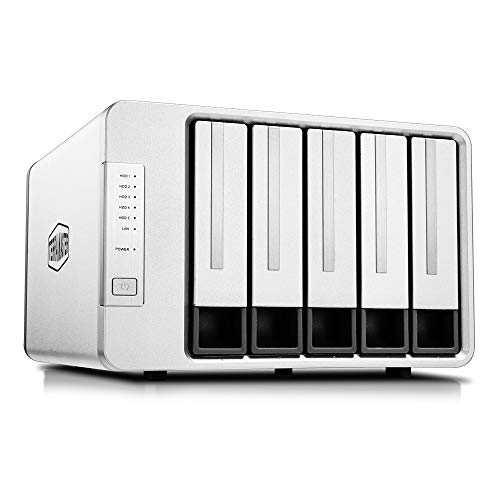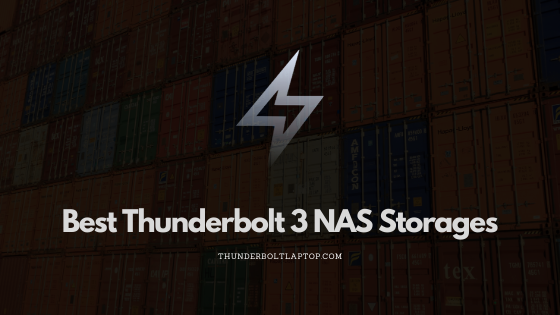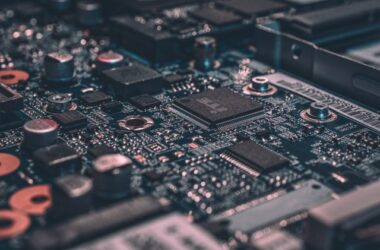Losing data is always a tremendous hassle.
It doesn’t matter whether you’re an individual that has all thirty-one seasons of The Simpsons in HD, or if you’re an international business with terabytes of customer data on hand; losing data sucks.
Reliability of data is crucial for every company and if you’re here, browsing this article right now, there’s a good chance that you’ve lost some data and don’t want to do it again.
And, if we’re right, then a Network Attached Storage (NAS) is exactly what you are looking for!
Table of Contents
What is a Network Attached Storage (NAS)?
It’s capable of storing a mass amount of data and, as we said earlier, are equipped with a RAM and a processor to access data much faster and deal with a huge load of traffic on the network pretty easily.
Why Choose NAS over Other Alternatives?
NAS devices are pretty expensive as compared to some traditional forms of storage; i.e. hard drives, servers, cloud-based storage, etc. However, NAS has an edge over all of them for being the most flexible and reliable kind of storage facility out there.
Servers are a decent alternative, but they deal with a much wider array of facilities; allocating resources, storing emails, and obviously, storing huge chunks of company data. But you only need one of those and not the rest. Cloud-based is a suitable option too but still, we’d go NAS over cloud any day.
So, let’s talk about some numbers. A decent NAS device costs way more than any of the other storage alternatives mentioned above. The cost of cloud storage per month is probably over 20 times less than buying a NAS. If you’re a small business and can’t afford to drop a huge cheque on a NAS, then cloud storage is the way to go. However, if you’re in it for the long run and are looking for something that may cost more, but is a one-time investment. If you buy a NAS, you’d be saving yourself a ton of cash since you’re getting at least 50 TBs of space and you have it forever. It’s not with you for a month, a year, or two years; it’s here forever. So, in a way, a NAS is an investment that will save you plenty of cash over the course of a few years.
So, you can already guess that the primary factor in a NAS device is speed. And, when there’s the name of speed, there’s always Thunderbolt 3. If you’re looking for an amazing Thunderbolt 3 NAS device to compliment your company’s storage needs, then you’re on just the page. We’re going to go over some of the best Thunderbolt 3 NAS machines out there by going over the pros and cons of each and giving you guys the verdict on them as well. So, let’s get right to it!
Comparison of Thunderbolt 3 NAS Storage
| Image | Product | Features | Check Price |
|---|---|---|---|
 | QNAP TVS 1282T3-i5-16G-810 R-US | Processor: Intel Core i5-7500 Bays: 12 Max Storage: 192 TB RAM: 16 GB / 32 GB / 64 GB GPU: – TB3 ports: 4 | Check on Amazon |
 | QNAP TVS 472XT-PT-4G-US | Processor: Pentium Gold G5400T Bays: 4 / 6 / 8 Max Storage: 64 TB / 96 TB / 128 TB RAM: 4 GB GPU: Intel UHD Graphics 610 TB3 ports: 2 | Check on Amazon |
 | TerraMaster F2-210 NAS | Processor: ARM v8 Bays: 2 / 4 Max Storage: 64 TB RAM: 1 GB / 2 GB GPU: – TB3 ports: 1 | Check on Amazon |
 | QNAP TS-453BT3-8G-US | Processor: Intel Celeron J3455 Bays: 4 / 6 Max Storage: 64 TB / 96 TB RAM: 8 GB GPU: – TB3 ports: 2 | Check on Amazon |
 | TerraMaster F5-420 NAS | Processor: Intel Celeron Bays: 5 Max Storage: 60 TB RAM: 4 GB GPU: – TB3 ports: 2 | Check on Amazon |
1. QNAP TVS 1282T3-i5-16G-810R-US
So, the very first entry is from a behemoth of a NAS that’s impossible to beat in terms of components.
This device is so next level that its probably even more powerful for day-to-day tasks then our own gaming rigs. This is a highly exclusive NAS and if you’re not a high-end business, you shouldn’t even consider the QNAP TVS 1282T3.
Memory
The very first thing you see when you take a glance at this wonderfully expensive device is the number of bays on it. There are 12 individual bays for 12 different HDDs in this NAS. This number is equal to the bays of the next three entries on our list COMBINED!
You’ll be able to easily hit a storage space of over 190 TBs and the keyword to focus on here is easy. The best thing about this NAS is that there are 8 bays loaded with pre-configured hard drives already. You’re getting a flat 80 TBs of space on purchase along with the option of buying more if necessary. What else could you possibly as for?
As you’ll learn a little later, there are six different variants of the NAS and three of them come with different RAM options. The least of all three are highly subtle and start off at 16 GBs. After 16 GBs, it can be upgraded up to 32 GBs and then finally up to 64 GBs where necessary. That’s absolutely insane considering most of our everyday PCs are running on 8 and 16 gigs of RAM.
Processor
The processor is where things start getting a bit hotter. Like we said above, there are several different variants of the QNAP TVS 1282T3. So, QNAP decided it was a good idea to take some of the most powerful processors out there and load them into their NAS devices. There are two different possible processors.
One is an Intel Core i5-7500 processor with 3.4 GHz max clocking speed. The second variant takes things up a notch. With a Core i7-7700, 3.6 GHz can make any NAS look like a kid.Other Features
Coming with a Thunderbolt 3 port, this NAS makes transmitting files and 4k objects very easily. The Thunderbolt 3 gives a transfer speed of 40 Gb/s, but the NAS itself comes with two different 10 GbE ports built-in for faster connectivity.
Our TakeSo basically, we’ve established that the QNAP TVS is one of the most powerful storage devices to ever be invented in the world. There’s pretty much nothing wrong with the device itself. However, the device could be wrong for you. If you’re a small to mid-business, we recommend going for something further down list. Spending all this money on such a high-performance machine without having a need for the processing power is sort of a waste.
- 12 bay HDD space.
- 80 TBs pre-installed hard drive space.
- Amazing desktop processor.
- Insane amount of RAM.
- A bit too expensive for the common folk.
2. QNAP TVS 472XT-PT-4G-US
QNAP is pretty much the go-to vendor when it comes to Thunderbolt 3 NAS devices in the market today and it’s no surprise that they’re the top on our list.
The QNAP TVS is one of the most customizable NAS devices available and with the various options available, you can easily tailor the storage space to what you and your company need.
Memory
So, the very first thing to discuss would be the storage space in this thing. The machine comes in three variants; 4 bays, 6 bays, and 8 bays. If you’re intent on getting the machine with the drives already installed, you can buy the QNAP in combination with 4 TB or 8 TB hard drives from Amazon.
There are also two separate slots for M2 NVME SSDs, so if you’re looking for faster storage accessibility, that’s an option too.When it comes to RAM, you’re getting a 4GB SODIMM DDR4 RAM. SODIMM RAM is usually meant for laptops, but due to the size of the QNAP device, you’re obviously going to be needing to save all the space possible. Due to the RAM though, you’re able to expand the memory to 32 Gigs.
Processor
The processor on the TVS is pretty remarkable for a NAS device. It has a Pentium Gold G5400T 2-core 3.1 GHz processor. If you’re not familiar with the Pentium Gold processor, it’s an equivalent to the Intel Core i3 processor. The CPU on this thing does have lesser cores than most modern-day processors, however, it’s an impressive Kaby Lake processor for entry-level machines. And, even though the processor may seem ‘underwhelming’, it’s still capable of processing 4k multimedia extremely fast.
GPU
Yes, a GPU isn’t really required on a NAS, however, it’s a really decent component to have in a storage device. So, basically, with a GPU, you can very easily perform video rendering tasks on a NAS device. The TVS uses an Intel UHD Graphics 610 to support your graphical requirements. The integrated graphics card on this machine is pretty basic, but it’s more than enough for the job it’s supposed to do.
Ports and Connectivity
Since this NAS is on our list of Thunderbolt 3 storage devices, it’s definitely going to have a TB3 port. The TVS has two of them actually paired together with a 10 GBase-T RJ45. There are five USB ports on this device; a USB 3.0, 2 x USB Type-C 3.1, 2 x USB Type-A 3.1. And finally, there’s an HDMI port that supports up to 3840 x 2160 at 60Hz.
Our TakeConsidering the fantastic hardware in the TVS, you’re getting a lot of stuff for reasonable pricing. It’s an amazing product, however, the buggy software is a bit unreliable. Like, the whole purpose of getting a separate NAS is dependability and reliance. If you can’t do that with the TVS, then there’s no point of the device, now is it? However, you won’t be losing data, you’ll have it unavailable sometimes due to unnecessary reboots, so that’s definitely on the plus side of things.
- Expandable memory sizes.
- Intel Pentium Gold G5400T Processor
- Slots for 2 M2 SSDs
- Two Thunderbolt 3 ports
- Intel UHD Graphics 610 GPU
- The hardware is a solid 10/10. But the software is really buggy.
3. TerraMaster F2-210 NASM – Best Budget NAS Device
The TerraMaster F2-210 is one of the most affordable NAS you’re going to find out there.
It’s a great combination of components paired up with an extremely handsome price; making the TerraMaster F2 one of the best NAS devices for small to mid-level businesses.
Memory
We said just above, the TerraMaster F2-210 is meant for small to mid-level business. However, the storage space for the device is way more than you’d imagine. There are two variants of the TerraMaster, one supports 2 bays and one, 4 bays.
Both of the variants support up to 16 TB Hard Drive, so you can get up to 64 TBs of space at one time. Pair this up with a WD Red Hard Drive or a Seagate Iron Wolf you’ll have a NAS for all that you could possibly store. The bays can support both 3.5’’ and 2.5’’ HDD along with 2.5’’ SSDs as well.
In terms of RAM, the TerraMaster does take a huge punch. There’s only a 1 GB RAM in the 2-bay variant and 2 GB RAM in the four variant one. Worst part? Getting more RAM is not an option. 2 GB is all you’re going to get as the RAM is not expandable.
Processor
The processor on this thing does leave you wanting a bit more. It uses an ARM v8 quad-core, 1.4 GHz processor. If you’re not familiar with the CPU, it’s based on a new ARMv8 architecture that’s been around since early 2011. ARM processors are usually pretty small in size because they don’t require as many transistors.
Due to their size, these processors are installed in smartphones, tablets, smartwatches, etc. TerraMaster placed this processor in a NAS, but due to the functionality of the device and the consumers it’s made for, the processor isn’t necessarily underperforming.
Other Features
This device is made in China, or, at least the software used in it is. But, don’t get us wrong, the software is pretty reliable and works very well with the hardware.
Yes, the hardware on this thing isn’t as flashy as the QNAP NAS we talked about earlier. But the truth is that this a mid-level NAS storage made for smaller businesses and individuals. It’s not meant to one for big corporations, so, even with the mediocre hardware, we highly recommend it.
- An insane amount of available storage space.
- Extremely affordable.
- Uses TerraMaster’s TOS 4.1 OS.
- Compatibility with both SSD and HDD
- Limited RAM
- The processor isn’t extremely powerful.
- Chinese language mixed with English here and there.
4. QNAP TS-453BT3-8G-US
This is the second QNAP device on our list and for good reason. As we mentioned earlier, QNAP is our go-to vendor for NAS devices, but the TS-453BT3 is truly something else. It has a bunch of hardware in it that you don’t really expect a NAS to have, which makes it all the better.
Memory
There are two different versions of this particular device. One comes with a 4-bay slot and one with a 6-bay slot. Both variants support up to 16 TB hard drives in each bay.
The HDD isn’t the special part about the TS-453BT3. The more interesting part would be the RAM in this thing. The device actually uses 8 GB DDR3L RAM on this tiny NAS machine. The RAM is not expandable, but let’s be honest, who needs more than 8 GB RAM on a NAS?
Along with the insane RAM and hard drive space, QNAP continues on its tradition by providing two M2 SSD slots. So, if you’re looking for that extra kick along with your NAS’ performance, the SSD addition will definitely help.
Processor
The processor on this NAS is actually pretty sweet. It’s an Intel Celeron J3455. A few years back, the Intel Celeron lineup was very popular for laptops. They may have slowly faded away from laptops, but they’re still extremely powerful when it comes to NAS. The processor is a quad-core CPU with a speed of 1.5 GHz that can be overclocked up to 2.3 GHz.
Other Features
The QNAP TS-453BT3 itself runs on Mac OS but is actually compatible with a ton of operating systems. Start from with your typical Mac OS, Linux, Unix and Windows 10, the NAS works well with Windows 8, Windows 7, and about 7 different variants of Microsoft Windows Server.
The Thunderbolt 3 connectivity gives you access to 10 Gbe networks through your NAS. The boost from the TB3 is an insane addition to your NAS’s existing data accessing capabilities.
The TS-453BT3 comes with an OLED panel display and two capacitive touch buttons to control the device.
Our TakeThis is definitely one of the most stable NAS’ on our list. The reason behind that is there’s not much wrong with it. Yes, there are some issues with the menu’s UI and language but, except that minor inconvenience, you don’t really have much to complain. The Thunderbolt 3 with the processor, the 8 gigs of RAM and the dual SSDs give you an access time that’s extremely hard to beat.
- Intel Celeron Processor.
- 8 GBs of RAM.
- Wide range of compatibility.
- 4K HDMI display.
- Chinese settings in menus.
- Complex UI design.
5. TerraMaster F5-420 NAS
One thing that the TerraMaster really excels in is creating storage devices that are indeed top of the line, but still within the budget.
This one is a bit pricier than the TerraMaster NAS we talked about a little earlier, but it’s still a lot less costly than QNAP.
Memory
Starting with the hard drive space, there are 5 bays available in this NAS, each supporting a hard drive of up to 12 TB. So, in total, you can get a storage space of almost 60 TBs with the F5-420. The NAS is also compatible with an SSD, so if you want faster data accessing speeds, adding an SSD is an option too.
The RAM on this thing is also pretty impressive. It comes off the shelf with a 4GB RAM. If that’s not enough to suit your needs, it’s upgradable to 8 GB as well.
Processor
The processor on this thing is a huge upgrade over the earlier TerraMaster F2. It uses a Quad-Core 2.0 GHz Intel Celeron CPU to make data processing that much faster.
Other Features
The TerraMaster F5 comes equipped with Plex. Plex is a hardware transcoding platform designed to convert and play videos on the go.
So, if you have a bunch of video files stored on your NAS, you can conveniently access them with your smartphones. And, that’s not all you can access with your smartphone. TerraMaster gives you full compatibility with the TNAS Mobile App.
Our TakeThe TerraMaster F5 is a really decent device. It’s a pair of decent hardware and equally good software. However, the loophole in their security is a huge letdown. This isn’t ignorable as security is one of the primary reasons why people want a NAS. These issues are rare, but they happen and that’s a huge letdown.
- Intel Celeron Quad-Core Processor
- 5 bays (total 60 TBs of space)
- 4 GB RAM (Expandable)
- SSD Compatibility
- Equipped with Plex
- Remote Access
- TNA’s antivirus isn’t as great as you’d expect it to be. People have had problems with hackers getting into this NAS and exploiting it for mining cryptocurrencies.




